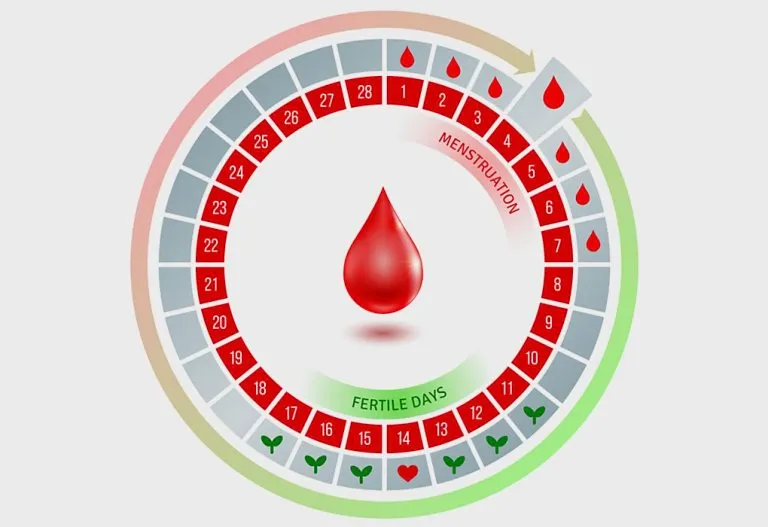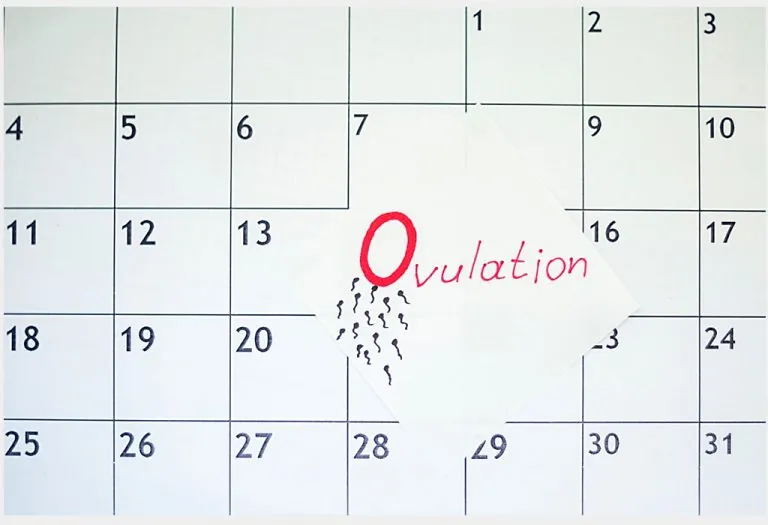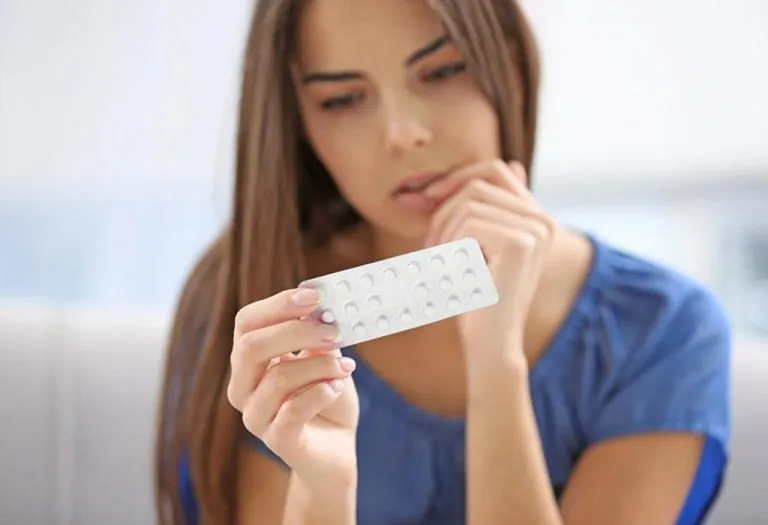Finding Your Fertile Window: How to Calculate It

If you and your spouse are planning to get pregnant, then one thing that you need to be aware of is your fertile window, especially your fertile days. A lot of couples struggle to conceive simply because they are not aware of their best days to conceive, missing the most optimal time for pregnancy. The human body is made in such a way that it has certain days each month when the body prepares itself for pregnancy, known as the ovulation period. Knowing these days can pave the way to a long-awaited pregnancy for you and your spouse, increasing your chances significantly. Tracking ovulation and identifying fertile days to get pregnant can make a huge difference in your conception journey.
What Is a Fertile Window?
Here is the fertile window meaning. When a woman is ovulating, her ovaries release an egg into the Fallopian tube. The egg stays in the Fallopian tube for 24 hours before making its way to the uterus. In the absence of sperm, the egg, along with the uterine lining that was prepared for pregnancy, disintegrates and comes out in the form of a menstrual period. However, in the presence of sperm, the egg gets fertilised to become a zygote, which then attaches itself to the uterine wall. This zygote becomes an embryo, which then later evolves into a foetus (1).
A lot of people misunderstand how ovulation works. They assume that there’s only one day in the month that a woman can get pregnant, because the egg survives only for a day. However, here’s a fact – sperms can live in the uterus for over five to six days. This is why having intercourse during the five to seven days before ovulation increases the chances of getting pregnant.
How to Calculate Your Fertile Window
Here’s how you can find out your fertile period (2):
1. Track Your Menstrual Cycle for Several Months
To calculate your fertile window, start by tracking your menstrual cycle for at least five months. Note the length of each cycle, counting from the first day of your period to the day before your next period begins. Using a period-tracking app can simplify this process, as many apps automatically predict ovulation and fertile days based on your data. Some apps even function as fertile window calculators, making the calculation of most fertile days easier for you.
2. Use the Calendar Method to Estimate Your Fertile Window
A common way to determine your fertile window is the calendar method. First, identify your shortest menstrual cycle (e.g., 27 days) and subtract 18 (27 – 18 = Day 9). Next, take your longest cycle (e.g., 30 days) and subtract 11 (30 – 11 = Day 19). This means your fertile window likely falls between Day 9 and Day 19 of your cycle. While this method provides an estimate, it’s more accurate when combined with other tracking methods.
3. Observe Changes in Cervical Mucus
Cervical mucus changes throughout your cycle, reflecting hormonal shifts. After your period, discharge is often dry or minimal. As ovulation nears, it becomes sticky or creamy. During your most fertile days, mucus turns clear, slippery, and stretchy (resembling egg whites), creating an ideal environment for sperm. Tracking these changes daily can help pinpoint ovulation and your fertile window.
4. Use Ovulation Predictor Kits (OPKs)
Ovulation predictor kits (OPKs) detect the luteinizing hormone (LH) surge, which triggers ovulation 24–36 hours later. Test daily around your predicted fertile window, ideally in the afternoon. A positive OPK indicates high fertility in the following days. While helpful, OPKs can’t confirm ovulation occurred (only that it’s likely), so pairing them with BBT or mucus tracking improves accuracy.
How to Know You Are in a Fertile Window
Your body gives clear physical signals when you’re in your fertile window – the 5-6 day period each cycle when pregnancy is possible. Here are the most common symptoms that indicate you’re fertile right now (3):
1. Egg White Cervical Mucus
The most reliable natural sign is the appearance of clear, stretchy cervical mucus resembling raw egg whites. This fertile-quality mucus:
- Will be slippery and have a wet texture
- Can stretch between fingers without breaking
- May leave a moist sensation in your underwear
- Typically appears 2-3 days before ovulation
2. Increased Sex Drive
Many women experience a natural boost in libido during their fertile days due to rising estrogen levels. This biological urge peaks just before ovulation.
3. Breast Tenderness
Your breasts may feel fuller, heavier or more sensitive to touch as ovulation approaches due to hormonal changes.
4. Mild Pelvic Pain (Mittelschmerz)
About 20% of women feel a slight twinge or cramp on one side of their lower abdomen when the egg is released. This ovulation pain may last a few hours to a day.
5. Heightened Senses
You might experience temporary changes like:
- Sharper sense of smell
- Increased taste sensitivity
- More energy and sociability
6. Cervical Changes
Your cervix becomes:
- Softer (like your lips vs. your nose)
- Higher in the vaginal canal
- More open
- Wet to the touch
7. Basal Body Temperature Shift
While not a “current” symptom (it rises after ovulation), tracking your morning temperature helps confirm ovulation occurred and predict future fertile windows. Measure your basal body temperature every morning before getting out of bed, as your resting temperature slightly rises (by 0.4–0.8°F) after ovulation due to increased progesterone. The average pre-ovulation BBT ranges from 96–98°F. Tracking this over several months can help you identify a pattern and predict future fertile days. Note that BBT confirms ovulation after it has occurred, so it’s best used alongside other methods.
How Does a Fertility Chart Help?
A fertility chart can help boost your chances of getting pregnant by keeping a tab on your fertility window and knowing when your body is best prepared for pregnancy. No one knows your body better than yourself, and tracking down all the changes in your body with a fertility chart will help you know and understand your fertility window better (4).
Is It Possible to Get Pregnant Outside the Fertile Window?
While the chances are significantly lower, it is technically possible to get pregnant outside your typical fertile window, though rare. Sperm can survive inside the reproductive tract for up to 5 days under ideal conditions, meaning intercourse up to 5 days before ovulation could result in pregnancy. Additionally, ovulation can sometimes occur earlier or later than expected due to stress, illness, or hormonal fluctuations, potentially expanding the fertile period. In very rare cases, some women may even experience multiple ovulations in a single cycle. However, the likelihood of conception drops sharply outside the standard 6-day fertile window (the 5 days before ovulation and ovulation day itself), with pregnancy being extremely unlikely more than 24 hours after ovulation or more than 5 days before. For those trying to avoid pregnancy, it’s safest to assume fertility can occur unpredictably.
Tips to Boost Fertility During Your Fertile Window
Maximising your chances of conception during your fertile window involves timing, lifestyle adjustments, and understanding your body’s signals. Here are key tips to enhance fertility when you’re most likely to conceive (5):
- Time Intercourse Strategically: Aim for every other day (or daily) during your fertile window, especially when you notice egg-white cervical mucus or get a positive ovulation test.
- Maintain a Healthy Diet: Focus on antioxidant-rich foods (berries, nuts, leafy greens), whole grains, and lean proteins to support reproductive health.
- Stay Hydrated: Proper hydration improves cervical mucus quality, making it easier for sperm to survive and travel.
- Reduce Stress: High stress can disrupt ovulation—try yoga, meditation, or deep breathing to stay relaxed.
- Avoid Harmful Substances: Cut back on caffeine, alcohol, and smoking, as they can negatively impact fertility.
- Use Fertility-Friendly Lubricants: Skip standard lubes (which can harm sperm) and opt for sperm-friendly options like Pre-Seed.
- Optimise Sleep & Exercise: Prioritise 7–9 hours of sleep and moderate exercise (like walking or swimming) to balance hormones.
Common Misconceptions About the Fertile Window
Understanding your fertile window is crucial for conception, but misinformation can lead to frustration or missed opportunities. Here are some widespread myths—and the facts behind them—to help you navigate fertility more effectively.
• Misconception: You can only get pregnant on the day of ovulation
Fact: The fertile window spans 5 days before ovulation and the day of ovulation itself. Sperm can survive up to 5 days in fertile cervical mucus, making conception possible even if sex occurs days before ovulation.
• Misconception: Period-tracking apps accurately predict ovulation
Fact: Apps relying solely on cycle averages often miscalculate ovulation, especially for irregular cycles. They assume a 14-day luteal phase, which can vary (10–16 days). For accuracy, combine apps with physical signs like cervical mucus or LH tests.
• Misconception: A positive LH test confirms ovulation
Fact: LH surges precede ovulation but don’t guarantee it (e.g., in PCOS, LH may rise without ovulation). Progesterone tracking (via BBT or PdG tests) is needed to confirm ovulation occurred.
• Misconception: You’re still fertile the day after ovulation
Fact: The egg survives only 12–24 hours post-ovulation. The fertile window ends on ovulation day, though timing uncertainty may justify sex the next day as a backup.
FAQs
1. Can prescription painkillers (like ibuprofen) delay ovulation and affect the fertile window?
Yes, high doses of NSAIDs (e.g., ibuprofen, naproxen) may suppress ovulation by interfering with prostaglandins, which are essential for follicle rupture. A study found that women taking prescription-strength NSAIDs around ovulation had delayed or absent ovulation in that cycle (6). Occasional over-the-counter use is unlikely to have the same impact, but frequent use during the fertile window could disrupt timing.
2. Can you be fertile during your period?
It’s rare but possible, especially for those with short cycles (e.g., 21 days). If ovulation occurs shortly after menstruation, sperm from period sex could survive long enough to fertilise an egg.
3. Does breastfeeding create a reliable “Natural” fertile window delay?
While breastfeeding often suppresses ovulation (lactational amenorrhea), it’s not foolproof. Ovulation can resume unpredictably, even without a period, making the fertile window possible before menstruation returns.
For couples who are trying to conceive, the fertility window is like a pregnancy calendar. When you try to get pregnant, every month counts. Don’t miss yet another month – the fertility window might be just what you need to finally have your baby.
Also Read:
Can You Get Pregnant Before Ovulation?
Follicular Study – Know When You are Ovulating
Ovulation Symptoms: Key Signs, Timing, and Tracking Chart
Was This Article Helpful?
Parenting is a huge responsibility, for you as a caregiver, but also for us as a parenting content platform. We understand that and take our responsibility of creating credible content seriously. FirstCry Parenting articles are written and published only after extensive research using factually sound references to deliver quality content that is accurate, validated by experts, and completely reliable. To understand how we go about creating content that is credible, read our editorial policy here.
1. Better Health Channel – Ovulation and fertility
2. Johns Hopkins Medicine – Calculating Your Monthly Fertility Window
3. Cleveland Clinic – Ovulation
4. American Pregnancy Association – Fertility Charting Basics
5. Mayo Clinic – How to get pregnant
6. National Library of Medicine – Analgesic use at ovulation and implantation and human fertility






















